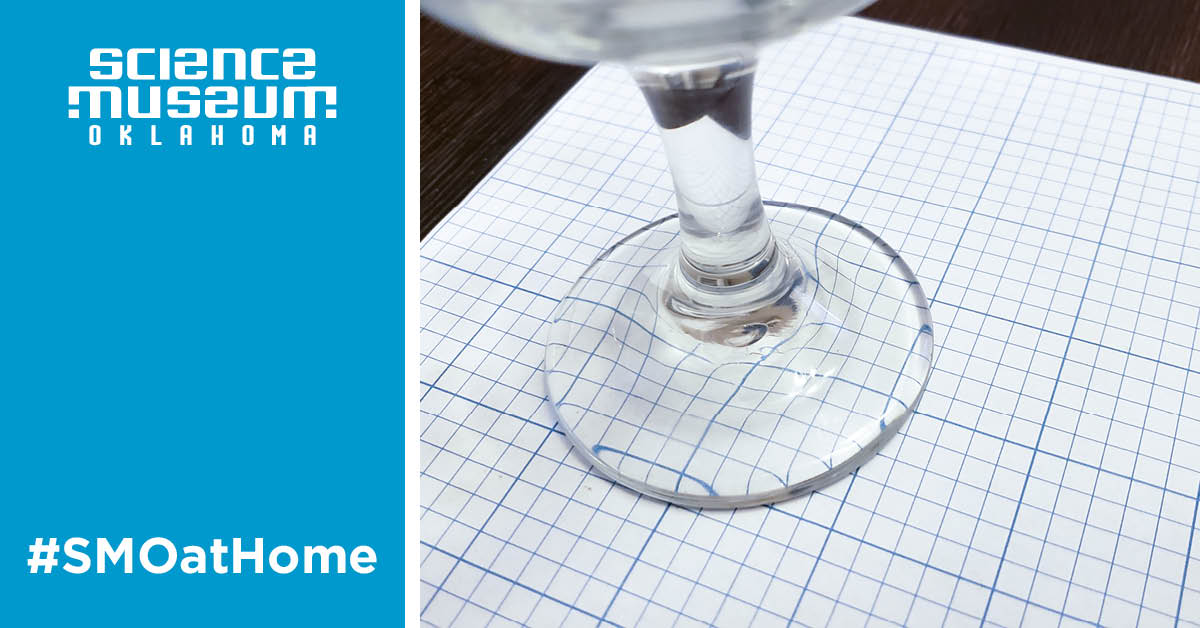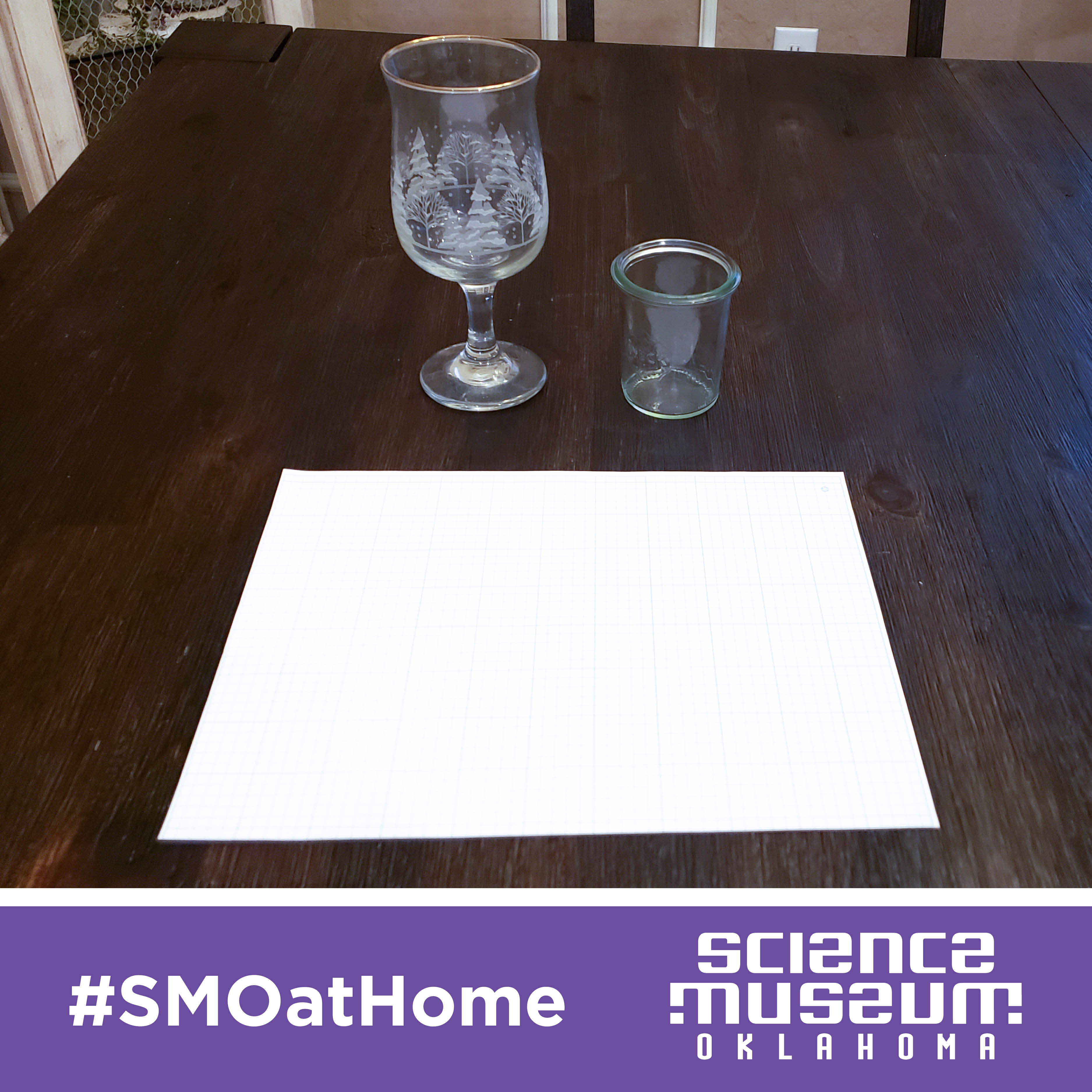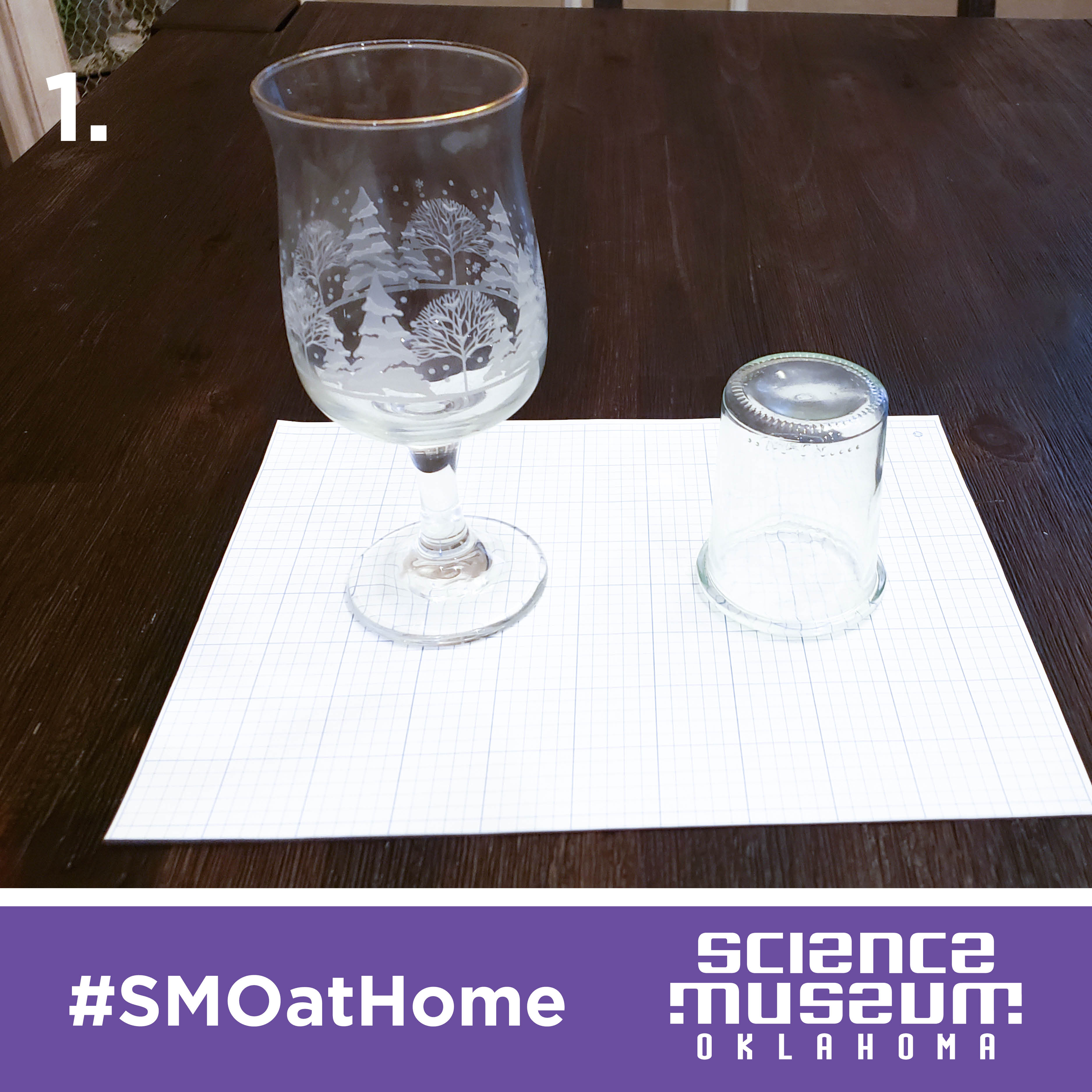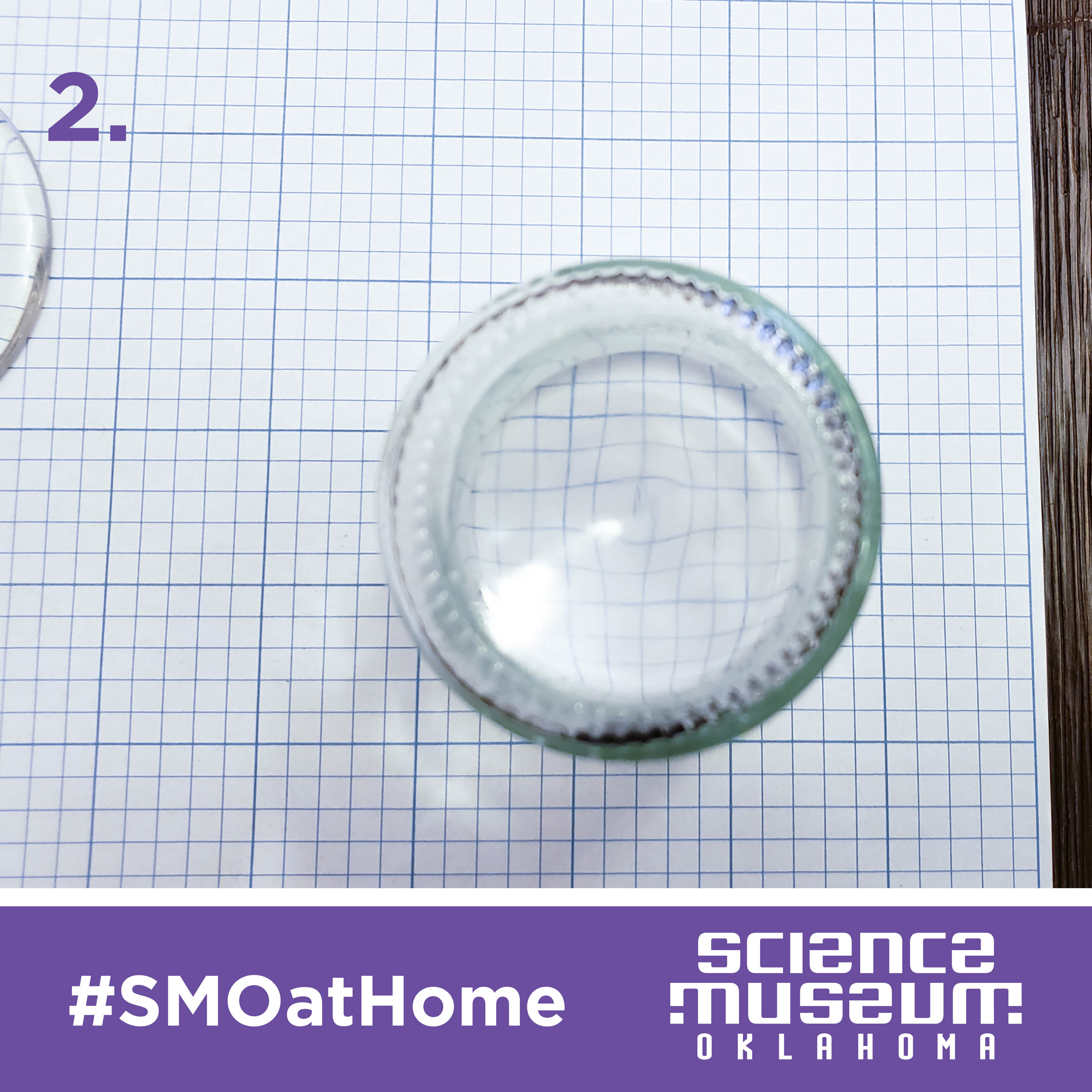Try This: Make a Gravitational Lens
This #SMOatHome is part of Space Day presented by Allied Arts!
Gravitational lensing occurs when objects with a lot of mass bend the space around them. This causes the light from behind the object to change direction, making anything behind it to look curved or bent.
You can create your own homemade “gravitational lens”! We can’t actually bend space at home, but we can use light refraction to create a similar effect.
Refraction occurs when light passes through a material like water or glass which can change the direction of light waves.

Here’s what you need:
- A sheet of graph paper or lined note paper
- A few different clear glasses with curved bottoms
Here’s what to do:
1. Set the graph paper on a flat surface.
2. If you have a glass with a stem, like a wine glass, start with it. Set the bottom of the glass on top of the paper, and look through the center of the glass.
3. Move the glass slowly across the paper. Notice how the lines bend around the center of the bottom of the glass.
4. Flip the glass over, and move it across the paper. What happens now?
5. Experiment with different sizes and shapes of glasses.
What’s happening:
The larger the glass or more curved the bottom of the glass likely resulted with the lines of the paper bending more.
In 1919 English astronomer Sir Arthur Eddington proposed a test to Einstein’s theory of general relativity. That year a solar eclipse was to occur within the Hyades cluster in Taurus. During totality, without the effect of relativity, none of the Hyades stars should be visible due to being hidden behind the eclipsed sun.
Eddington knew if he were to calculate the exact position of every star in the cluster and they “miraculously moved” during the eclipse along the edge of the eclipsed sun, it would confirm the theory of general relativity. This was because by showing that the sun’s gravity had bent the star's light it proved that gravity has an effect on light. Einstein was right! Therefore gravitational energy produced by a fore-ground galaxy bends the light of the background galaxy. This where the name "gravitational lens” comes from.







